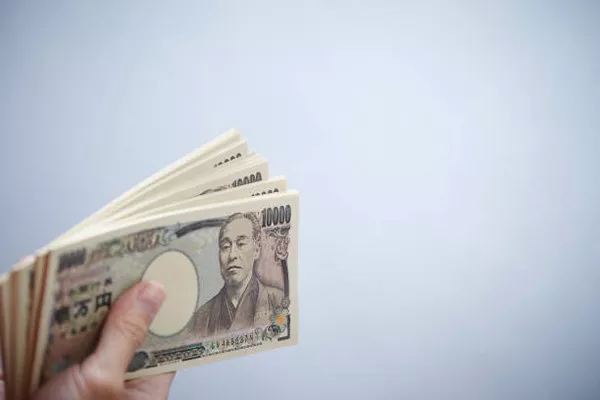Japanese yen paper money stands as a testament to the rich cultural and economic history of Japan. As a nation known for its precision, innovation, and aesthetic sensibility, Japan’s currency reflects these qualities in its intricate designs and historical significance. In this article, we will explore the artistry and evolution of Japanese yen paper money, delving into the fascinating journey of its design, the cultural symbolism embedded in each note, and the impact of historical events on its evolution.
The Early Years:
The origins of Japanese paper money date back to the Edo period (1603-1868), where a complex system of feudal currencies coexisted. However, it was not until the Meiji period (1868-1912) that Japan underwent a comprehensive modernization of its monetary system. In 1871, the Meiji government introduced the yen as the official currency, adopting the gold standard and establishing a foundation for the paper currency that would follow.
Meiji Era Banknotes:
The first series of Japanese banknotes issued during the Meiji era featured a blend of Western and traditional Japanese design elements. The notes, denominated in yen and sen, depicted scenes of modernization, including trains, steamships, and telegraph wires, symbolizing Japan’s embrace of technological progress.
Taisho and Showa Era Designs:
Subsequent eras, such as the Taisho (1912-1926) and Showa (1926-1989) periods, witnessed the issuance of banknotes with evolving artistic styles. The designs began incorporating more cultural and historical elements, reflecting a sense of national identity. Iconic images, such as cherry blossoms, Mount Fuji, and historical figures, became recurring motifs.
Cultural Symbolism in Design:
Cherry Blossoms (Sakura):
Cherry blossoms are a recurring motif in Japanese yen paper money, symbolizing the ephemeral nature of life. The delicate beauty of cherry blossoms is often depicted in various stages of bloom, conveying a sense of transience and renewal.
Mount Fuji:
Mount Fuji, Japan’s highest peak, holds immense cultural and spiritual significance. Its inclusion on banknotes symbolizes Japan’s enduring national identity and serves as a visual representation of the country itself.
Historical Figures:
Japanese yen paper money often features portraits of historical figures who played pivotal roles in Japan’s cultural or political development. Notable individuals, such as Prince Shotoku and Natsume Soseki, have graced the fronts of banknotes, emphasizing the continuity of Japan’s heritage.
Security Features and Technological Advancements:
With the advancement of printing technology and the need for enhanced security features to deter counterfeiting, Japanese yen banknotes have undergone continuous refinement.
Watermarks and Holograms:
Modern Japanese yen banknotes incorporate watermarks and holographic strips to enhance security. These features make it increasingly difficult for counterfeiters to replicate the intricate details of genuine banknotes.
Color-Shifting Ink:
Some denominations feature color-shifting ink that changes color when viewed from different angles. This dynamic element adds an extra layer of complexity to the design, contributing to the overall security of the currency.
Microprinting and Raised Printing:
Microprinting, where tiny text or patterns are integrated into the design, and raised printing, creating a tactile feel, are additional security measures that enhance the complexity of Japanese yen banknotes.
Commemorative and Collector’s Editions:
In addition to regular circulation banknotes, Japan has issued commemorative and collector’s edition notes, adding to the allure of Japanese yen paper money.
Commemorative Events:
Commemorative banknotes are often released to mark significant events in Japan’s history. These notes may feature unique designs and limited production runs, making them highly sought after by collectors.
Numismatic Significance:
Collector’s editions, often featuring special themes or anniversaries, are designed with meticulous attention to detail. These notes appeal to numismatists and collectors worldwide, providing a tangible connection to Japan’s cultural heritage.
Impact of Economic Changes:
Post-War Reconstruction:
In the aftermath of World War II, Japan experienced a period of economic reconstruction. The yen underwent significant changes, and new banknote designs reflected the nation’s resilience and determination to rebuild.
Introduction of the New Yen:
In 1953, a new series of banknotes was introduced, marking the transition from the old yen to the new yen. This change aimed to stabilize the currency and foster economic growth.
Era of High Inflation:
During the 1970s and 1980s, Japan faced economic challenges, including periods of high inflation. Banknotes from this era bear witness to the economic turbulence, with designs reflecting the evolving economic landscape.
The Future of Japanese Yen Paper Money:
As we look toward the future, the role of Japanese yen paper money continues to evolve. Digital advancements and the rise of cashless transactions pose challenges to traditional currencies, prompting discussions about the potential for central bank digital currencies (CBDCs).
CBDC Considerations:
The Bank of Japan has explored the possibility of a digital yen, considering the benefits and challenges associated with a central bank-backed digital currency. This potential shift could shape the future landscape of Japanese currency.
Continued Innovation:
Regardless of the form currency takes in the future, the artistic and cultural elements embedded in Japanese yen paper money are likely to persist. Continued innovation in design and security features will remain essential to adapting to changing economic landscapes.
See Also: What Is The Highest Yen Rate In History? [Revealed!]
Conclusion:
Japanese yen paper money, with its intricate designs, cultural symbolism, and historical significance, encapsulates the essence of Japan’s journey through time. From the early Meiji era to the present day, each banknote tells a story of a nation’s resilience, progress, and identity. As Japan navigates the complexities of a digital future, the artistry and evolution of its paper money serve as a tangible link between the country’s rich history and its aspirations for the years to come.


